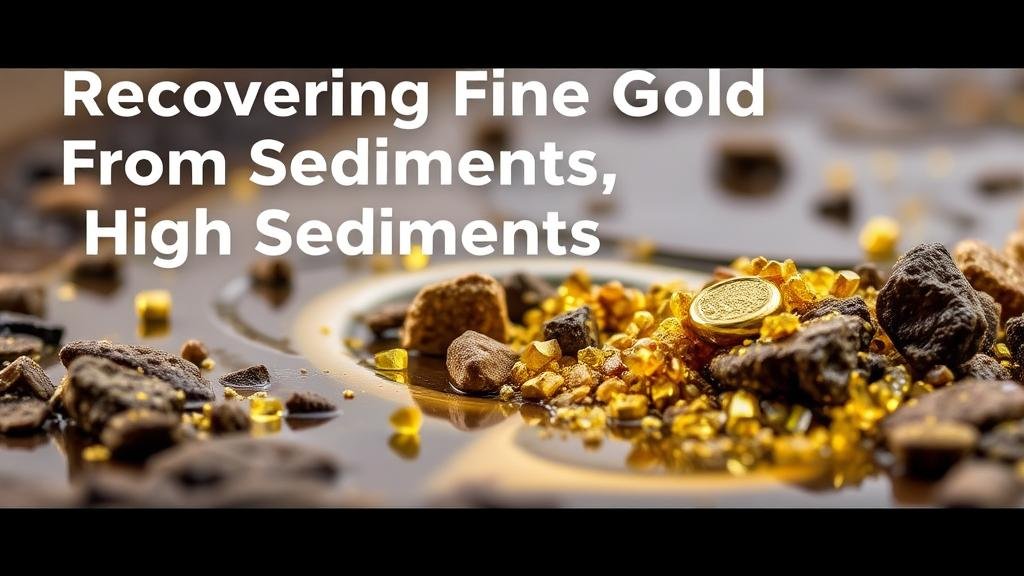Recovering Fine Gold From Sediments With High Organic Content
Recovering Fine Gold From Sediments With High Organic Content
The extraction of fine gold from sediments containing high organic materials presents a unique challenge in the field of gold recovery. Traditional methods are often ineffective in these environments due to the interference of organic matter, which can inhibit separation processes. This article explores effective methodologies for recovering fine gold from such sediments, emphasizing the significance of understanding both the geological and environmental factors at play.
Understanding the Challenges
Fine gold is typically characterized by its small particle size, often exceeding challenges during the recovery process. Here are several factors complicating recovery in sediments rich in organic content:
- Organic Material Interference: High levels of organic matter, such as decaying plant material, can create a binding effect that hinders the separation of gold particles.
- Flotation and Adhesion: Organic particles can cause gold to float rather than settle, making physical separation through gravity methods less effective.
- Chemical Reagents: Traditional chemical methods often fail due to organic interference, necessitating alternative approaches.
Methods of Recovery
Given the challenges, several techniques can be employed to effectively recover fine gold from organic-rich sediments. Here are the most prominent methods:
1. Gravity Separation Techniques
Gravity separation exploits the differences in density between gold and the surrounding material. Techniques such as panning and sluicing can be adapted as follows:
- Panning: Skilled artisans can adjust their panning technique to handle more viscous slurries, carefully washing away lighter materials while keeping gold.
- Sluicing: Incorporating rubber mats within sluices can effectively capture fine gold while allowing organic materials to flow through.
2. Chemical Methods
In some cases, chemical treatments can enhance gold recovery. Common approaches include:
- Cyanidation: While it is a widely used method for gold extraction, it must be carefully managed in organic-rich environments to avoid complex formation.
- Mercury Amalgamation: This process can effectively bind with fine gold but poses significant environmental risks and should be used with caution.
Recent advancements also explore the use of eco-friendly reagents that facilitate gold dissolution without harming surrounding ecosystems.
3. Biological Methods
Biomining is an emerging area in gold recovery, leveraging microorganisms to extract gold from sediments. Certain bacteria and fungi can bio-leach gold effectively, breaking down organic matter simultaneously. This innovative approach has shown promise in recent studies:
- Research Example: A case study conducted in South America demonstrated a 30% increase in gold recovery rates when treating sediments with specific strains of bacteria capable of digesting organic materials.
Technological Innovations
The integration of new technologies is vital to improving recovery techniques. Equipment advancements include:
- Mechanical Shakers: Utilizing oscillations to separate fine particles based on density and size can enhance recovery rates.
- Magnetic and Electronic Separation: These methods can be adapted to exploit the magnetic properties of certain impurities, assisting in isolating gold.
Case Studies and Real-World Applications
Useing the above methods in real-world scenarios highlights their effectiveness:
- California Gold Rush: Employing sluicing methods enhanced recovery from organic-rich riverbeds, achieving gold recovery rates exceeding 90% in optimal conditions.
- Modern Mining Operations: Companies in Africa have reported successful use of microbial treatments, significantly improving the yield from tailings containing high organic content.
Conclusion and Actionable Takeaways
Recovering fine gold from sediments with high organic content requires innovative thinking and the adaptation of traditional methods. Here are key takeaways for practitioners:
- Assess the organic composition of sediments before choosing a recovery method.
- Experiment with gravity and chemical methods, considering safety and environmental implications.
- Stay abreast of technological advancements and their applicability in your specific context.
By employing these strategies, gold recovery from complex environments can be optimized, balancing ecological considerations with economic viability.

